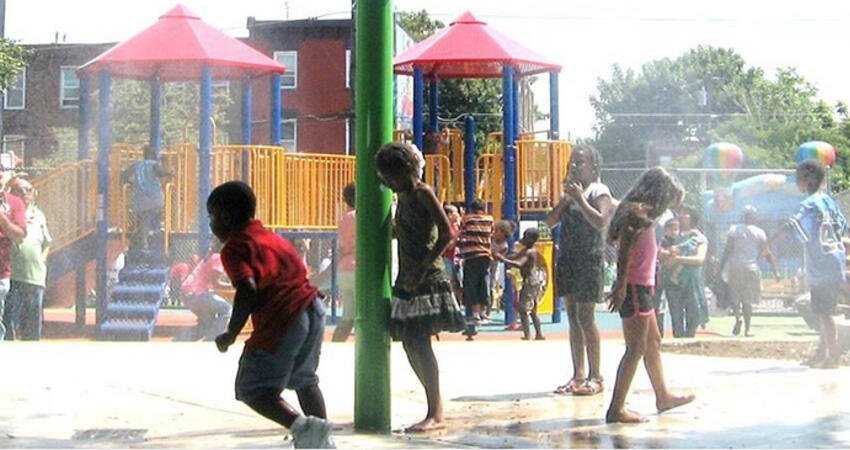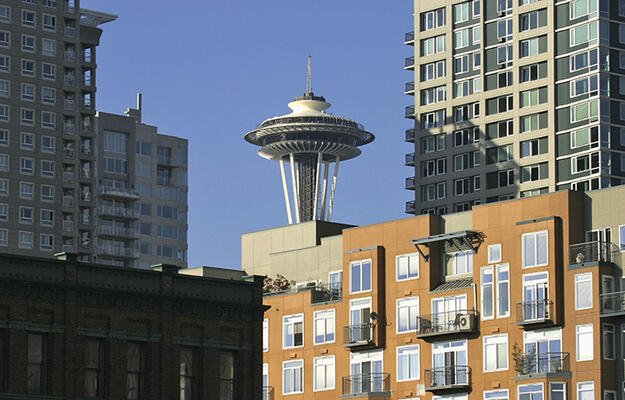
Crime Prevention of the Future? It Starts With Design.
Decades ago, the Olneyville neighborhood of Providence, R.I., bustled with the work of textile mills. But as this manufacturing shifted elsewhere and overseas, the area fell into disrepair. Mills were abandoned, vacant lots dotted the landscape, and crime found a new home.
This was the reality that the community faced several years ago when a partnership of residents, police, businesses and city agencies — intent on rehabbing Olneyville — decided to adopt a relatively new approach in planning: Crime Prevention through Environmental Design (CPTED). Eight years later, the neighborhood has seen a renaissance and is vibrant and safer than in years past. The success is in large part thanks to CPTED’s emphasis on things like improved lighting in public areas, new sidewalks and the elimination of remote or dark paths.
The concept for this approach to development dates back to a 1971 book by criminologist C. Ray Jeffery titled, simply, Crime Prevention through Environmental Design. Jeffery’s five prongs of CPTED are:
- Natural surveillance: Taking steps — such as limiting shrubs and adding lighting — to increase the perception that people can be seen.
- Natural access control: Differentiation of private and public space through designs such as paths and fences.
- Natural territorial reinforcement: Making it clear that property is not up for grabs, that it is either private or public, through design additions such as signage.
- Maintenance: Keeping private and public properties well-maintained to communicate the sense that the space is being utilized.
- Activity support: Creating visual cues and active spaces, such as bike trails and “children playing” signs, to indicate that the space is used and watched.
Derek Paulsen, the planning commissioner for Lexington, Ky., and a professor of criminal justice at Eastern Kentucky University, said Jeffery introduced the idea that crime results in part from the opportunities presented by the physical environment. It follows, the thinking goes, that changing a neighborhood’s physical environment can help reduce crime.
Even so, adoption of CPTED in the United States has been slow going. Though CPTED is widely embraced in the United Kingdom — where it is known as “Secured by Design” — only spot programs exist in the U.S. Often initiated by one or two police officers who have taken certification courses, CPTED is not yet “baked into all new developments,” said Paulsen. He suspects that one reason communities haven’t rushed to implement these methods is because no official organization is touting the many benefits.
“Police have generally viewed crime prevention as important, but not as important as core work such as patrols and investigations,” said Paulsen, noting that in the U.K., the country’s Association of Chief Police Officers has endorsed Secured by Design. Then the snowball effect takes hold. That key backing leads to stronger support from the government and insurance agencies — and, therefore, from developers.
The Association of State and Territorial Health Officers (ASTHO), a professional association of top health officials, has created policy guides that showcase cross-sector collaboration, including one focused on housing and CPTED. The goal is to highlight a “health in all policies” approach that integrates health considerations into policymaking and programs across sectors to improve public health.
Kerry Wyss, senior director of environmental health at ASTHO, said CPTED caught the association’s attention several years ago because of its focus on multi-disciplinary collaboration. She said ASTHO has reviewed some of these programs after they were implemented across the country and liked what it saw.
If people believe they’re safe, said Wyss, that can “increase walkability, increase neighborhood cohesion, and … reduce injury, violence, and improve other issues.”
Public health initiatives that benefit from CPTED include Safe Routes to School programs — a national effort to get kids to walk and bike to school — and joint-use agreements, which give community residents after-hours access to facilities such as public school playgrounds.
A recent study by George C. Galster, professor of urban studies and planning at Wayne State University, explains how a neighborhood’s social environment — such as supportive social networks, local norms and peer influences — impacts health outcomes. The study listed neighborhood violence among the environmental hazards such as pollution that can lead to poorer health outcomes. The chronic stress of living in high-crime, high-poverty neighborhoods with deteriorating buildings, according to Galster’s analysis, can affect parenting, which in turn trickles down to their children.
Developers and public health officials may count CPTED among their tools for breaking through neighborhood safety concerns. The Philadelphia-based community development non-profit Asociación Puertorriqueños en Marcha (APM) found CPTED principles valuable in supporting public safety near Paseo Verde, a mixed-income, mixed-use, health-focused development created by a partnership of APM and the Jonathan Rose Companies. The principles have helped restore local playgrounds as welcoming recreational areas, which can both increase resident satisfaction and reduce childhood illnesses related to inactivity.
The ASTHO report highlighted a few examples of successful CPTED initiatives in the United States. One, in Portland, Ore., was adopted in 2008 and set out to include this new thinking in the design, construction and operation of multifamily housing in the city. The city’s CPTED policy also prohibits construction of any fencing or other barriers that block sightlines.
Another effort, in Durham, N.C., used the local police department’s public safety grant program to encourage community organizations to undertake a CPTED study. Paulsen, an expert on CPTED, said he’s recently seen an uptick in information requests about this type of design. He uses a simple, convincing analogy to explain the concept’s benefits when speaking with developers, builders, planners and police.
“It’s much easier to make changes with a pencil at the design stage than it is to make changes with a bulldozer after construction.”
Photo courtesy of APM.


